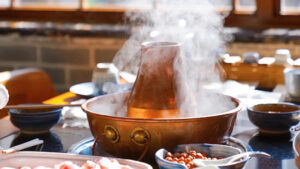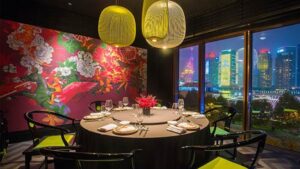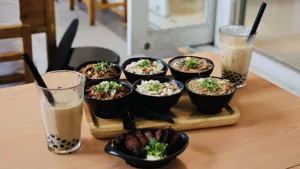The most famous and familiar concept is the so-called ‘8 major Chinese cuisines’ regarding the history and variety of Chinese food. Due to the vast land area of China and the diversity of landforms, climates, and products, Chinese people of different ethnic groups living in other regions have separate living and eating habits. People named the ‘8 Major Chinese cuisines’ after their locations. Would you please follow me to see which Chinese cuisines best suit your taste?
Chinese Cuisines #1 – Sichuan Cuisine or Chuan Cuisine (Sichuan refers to Sichuan Province)
Sichuan cuisine originated in the ancient Shu Kingdom more than 1800 years ago. Its taste characteristics are numbing, spicy, fresh, and fragrant. Home-made ingredients are selected, and guests are occasionally served delicacies from mountains and rivers when banqueting. The cooking methods of Sichuan cuisine include stir-frying, dry roasting, soaking, and braising. The main condiments are the main condiments of chili, black pepper, Sichuan peppercorn, and thick broad-bean sauce. With different proportions of different spices and a variety of flavor types, such as numbing and spicy, sour and spicy, pepper numbing, sesame paste, garlic paste, mustard, red oil, sweet and acid, and fish fragrance, Sichuan Cuisine have a unique flavor of ‘one dish with one style’ and ‘one hundred dishes with one hundred tastes.’
Classic Chinese dishes of Sichuan cuisine include Hot Pot, Kung Pao Chicken, Mapo Tofu, Fish-Flavored Shredded Pork, Twice-cooked Pork, Poached Beef, Souped Chicken, and so on.
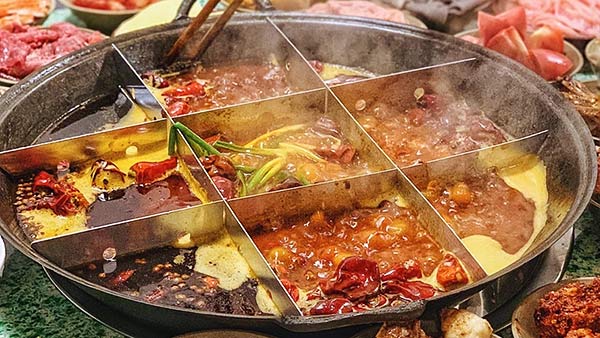
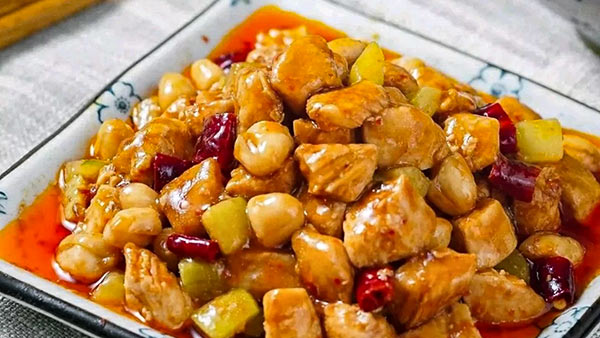
Hot Pot
Kung Pao Chicken
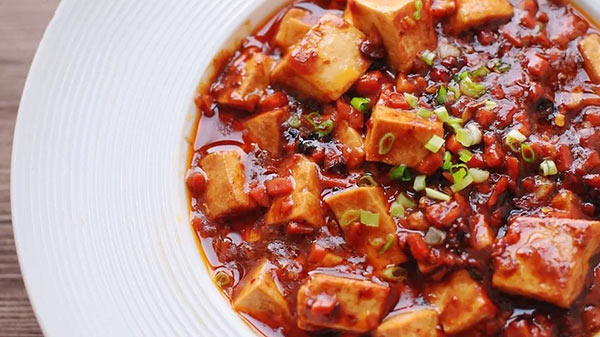
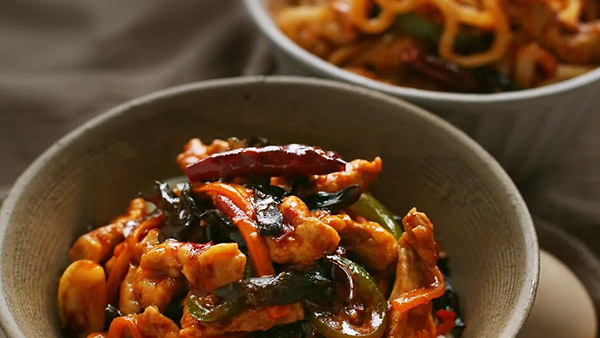
Mapo Tofu
Fish-flavored Shredded Pork
Chinese Cuisines #2 – Shandong Cuisine or Lu Cuisine (Shandong refers Shandong Province)
The Confucian school, which originated in Shandong Province 2500 years ago, established the aesthetic orientation of Chinese cuisine, which emphasizes fineness, neutrality, and health.
Summarized from the middle and Lower Reaches of the Yellow River 1600 years ago, the book of Qimin Yaoshu laid the framework of Chinese cooking techniques. These techniques include steaming, boiling, roasting, brewing, frying, boiling, bacon, salt, black beans, vinegar, sauce, wine, honey, and pepper.
During the Ming and Qing Dynasties, many Shandong chefs entered the palace, which further sublimated the style and characteristics of Shandong cuisine, which is graceful and luxurious, peaceful and healthy. Shandong cuisine pays attention to the quality of the food, using salt to extract freshness and soup to strengthen the freshness, highlighting the original flavor. The main cooking methods are bursting, braising, and caramel drawing.
Classic Chinese dishes of Shandong cuisine include Sweet and Sour Carp, Braised Sea Cucumber with Scallion, Four Happy Meatballs, Sauteed Fish, Dezhou Braised Chicken, Yipin Tofu, and so on.
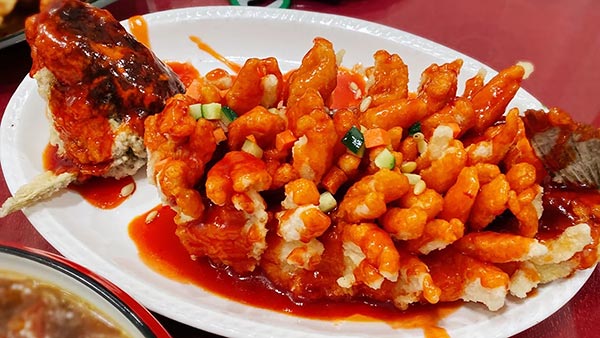
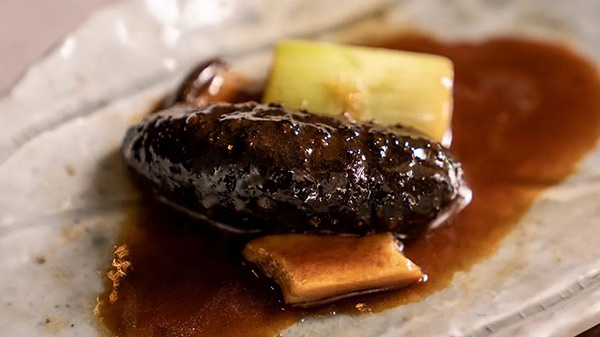
Sweet and Sour Carp
Braised Sea Cucumber with Scallion
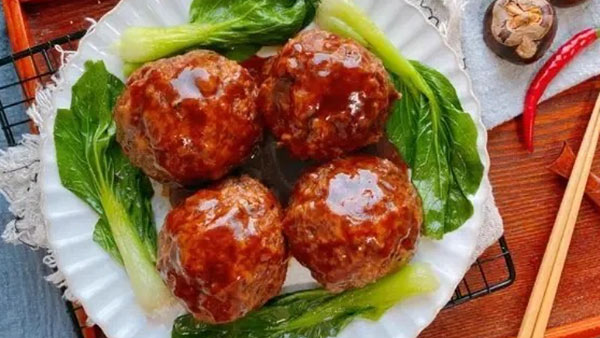

Four Happy Meatballs
Dezhou Braised Chicken
Chinese Cuisines #3 – Cantonese Cuisine or Yue Cuisine (Cantonese refers to the Guangdong Province)
The formation and development of Cantonese cuisine are closely related to the geographical environment, economic conditions, and customs of Guangdong province.
Guangdong is located in the subtropical zone, bordering the South China Sea, abundant in rainfall, evergreen throughout the year, and rich in products. Therefore, Cantonese food always had an advantage. Cantonese cuisine is a collection of local flavor characteristics and the specialties of Beijing, Jiangsu, Yangzhou, Hangzhou, and western cuisines. It has choices of a wide range of rare and exquisite ingredients. Also, it is good at innovating in imitation and cooking according to diners’ preferences. Kyoto Bone, Fried Slip Yellow Croaker, Shrimp, and Eel Back, absorb the taste of Beijing cuisine. Sipan beef, Yuxiang chicken balls, and Kung Pao chicken are borrowed from Sichuan cuisine. Also, Five fillet fish, Dongpo pork, and wine choke shrimp are Zhejiang flavors. Famous Lingnan Taiye Chicken is an Anhui food taste. And pork steak in western sauce, tomato sauce, etc., are transplanted from western dishes.
Classic Chinese dishes in Cantonese cuisine include roast suckling pig, white sliced chicken, crispy roast goose, braised pigeon, Taiye chicken, Dongjiang stuffed tofu, and eight-treasure winter melon cup, salt-baked chicken, etc.
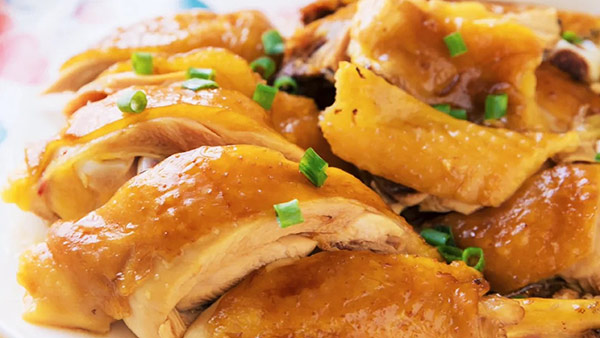
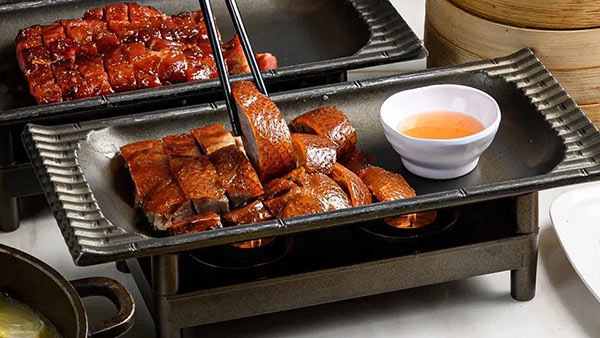
White Sliced Chicken
Crispy Roast Goose
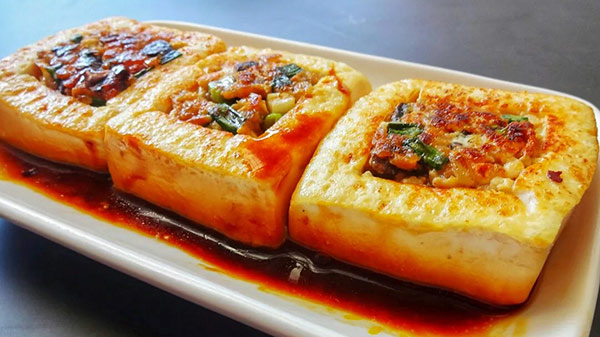
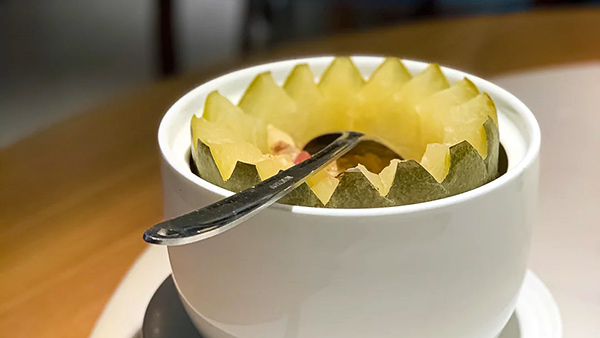
Dongjiang Stuffed Tofu
Eight-treasure Winter Melon Cup
Chinese Cuisines #4 – Fujian Cuisine or Min Cuisine (Min refers to the Fujian province.)
Fujian cuisine is famous for its delicacies of mountains and seas. It is especially good at “fragrance” and “taste.” Its refreshing, mellow, meaty, and non-greasy style characteristics and the wide range of soup characteristics make it unique in the field of cooking. Fujian cuisine pays attention to cutting skills and has the reputation of “sheets as thin as paper and shredded as hair.” All cutting skills are focused on “flavor” so that the raw materials can pass the knife skills to reflect the original flavor and texture of the raw materials. The emphasis on soups in Fujian cuisine is related to the cooking of seafood and traditional food customs.
From the long-term accumulated experience, Fujian chefs believe that soup dishes can best maintain the essence and original taste of raw materials, so there are many exquisite soup dishes. Some soups are white as milk, sweet and refreshing in many soup dishes.
‘Braised sea clam with chicken soup’ is a representative dish. Its “chicken soup” is not a simple “chicken” soup but a carefully made ‘Tricholoma matsutake,’ extracted from hens, pork loin, and beef. After entering the sea mussels produced in Fujian is a refreshing and endless aftertaste.
In terms of taste, Fujian dishes are salty, sweet, sour, spicy, and fragrant but strive to maintain the original flavor. It makes good use of sugar to sweeten and remove fishy mutton; it skillfully uses vinegar, sourness can be refreshing, and the taste is light while maintaining the original flavor. Therefore, it has the reputation of being sweet but not greasy.
The classic dishes of Fujian cuisine include Buddha Skipping wall and Nan Fried Live.
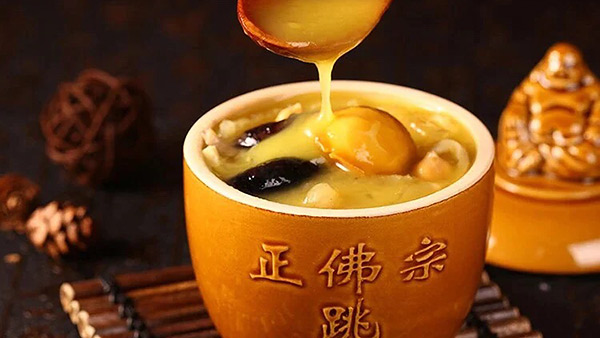
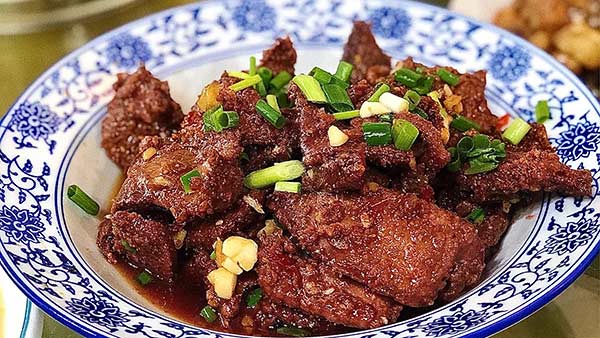
Buddha Skipping Wall
Nan Fried Liver
Chinese Cuisines #5 – Huaiyang Cuisine (Huaiyang refers to parts of Jiangsu Province on both sides of the lower Yangtze River)
Huaiyang cuisine is characterized by a rigorous selection of ingredients, fine production, and elegant style, pursuing the original flavor, freshness, and peace. The saying goes, ‘There are swordfish in Spring, catfish in Summer, crab, and duck in autumn, and wild vegetables in Winter.’ Therefore, the raw materials of Huaiyang cuisine are mainly fresh, which also provides a material basis for the cooking method of stewing and focusing on the original flavor.
Huai Yang cuisine has strict requirements for selecting raw materials for almost every dish while giving full play to raw materials’ characteristics in the dishes’ preparation. For example, chicks should be stir-fried to show their tenderness, the old chicken should be stewed to indicate its fat, the giant crab should be steamed, the small crab should be stir-fried, etc. The most famous dish for its cutting technique in Huaiyang cuisine is The Wensi Tofu, which requires a piece of soft tofu to be cut as thin as a hair.
The classic dishes of Huaiyang cuisine are Crab Meat Lion Head, Crystal Meat, Ruandou Long Fish, Wensi Tofu, Boiled Shredded Dry Bean Curd, Baipao Shrimp, and Santao Duck.
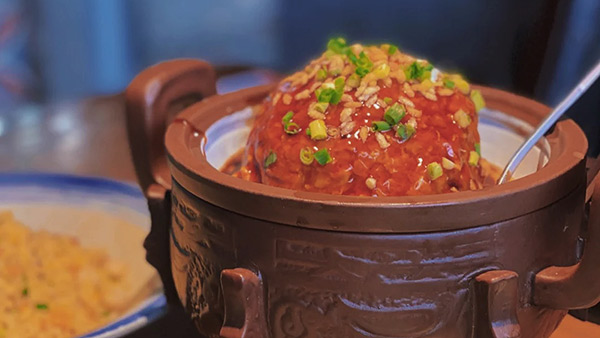
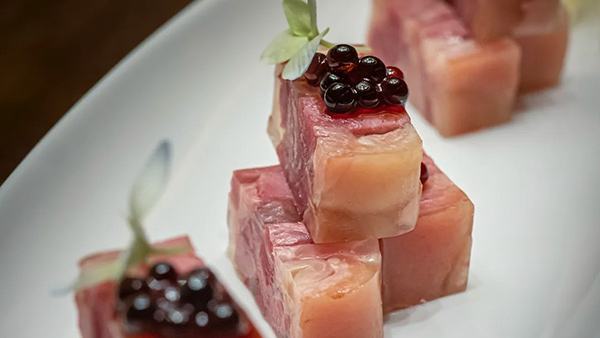
Crab Meat Lion Head
Crystal Meat
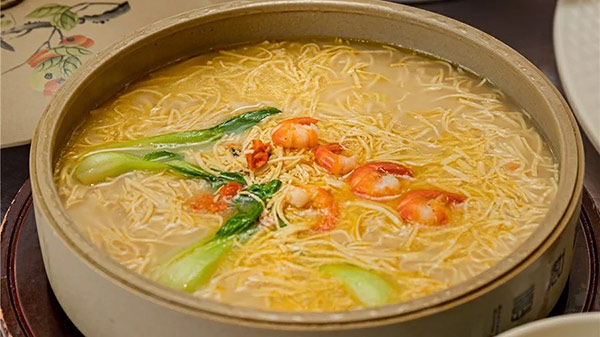
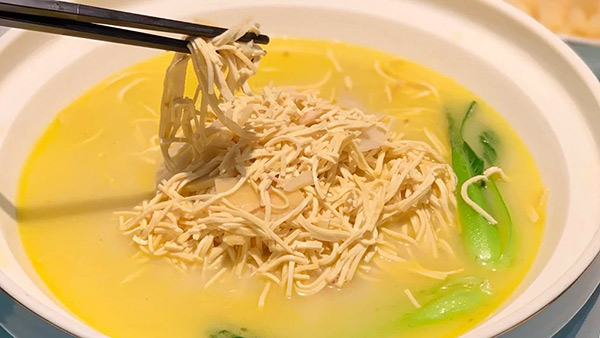
Wensi Tofu
Boiled Shredded Dry Bean Curd
Chinese Cuisines #6 – Zhejiang Cuisine or Zhe Cuisine (Zhe refers to the Zhejiang province.)
The raw materials of Zhejiang cuisine pay attention to the seasons to fully reflect the tenderness and crispness of the raw materials. The seafood, fruits, and vegetables used are all seasonal, and the poultry and livestock used are primarily local specialties.
Zhejiang cuisine is famous for its rich cooking techniques, among which six types are fried, deep-fried, sauteing, braised, steamed, and roasted. Since Zhejiang is rich in natural products, people use fresh bamboo shoots, ham, mushrooms, and green leafy vegetables to complement dishes. At the same time, onions, ginger, garlic, Shao wine, vinegar, and other condiments are used cleverly, removing fishy, mutton, and enhancing fragrance, expelling the unpleasant smell of the raw materials, and increasing the original flavor of the ingredients.
The famous traditional dish “Slices Ham” has an equal thickness and uniform length. Each slice is red and white, and its shape is like the arch bridge in the water towns of South China. The famous traditional dish of the Southern Song Dynasty, “Crab Stuffed Orange,” is a colorful, orange-flavored crab that is beautiful, ingenious, and unique.
Other Zhejiang dishes worthy of recommendation are West Lake Fish in Vinegar Gravy, Fried Fish with Three Shreds, Dongpo Pork, Mrs. Song Fish Soup, Longjing Shrimp, Beggars’chicken, and so on.
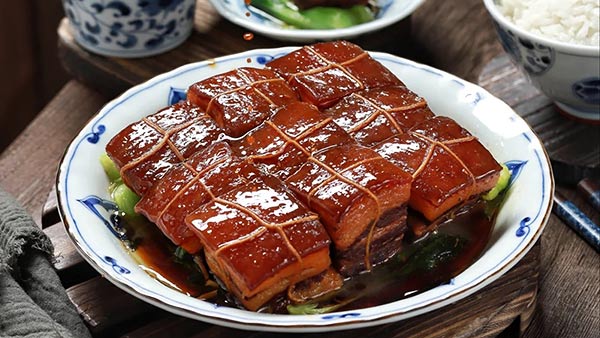
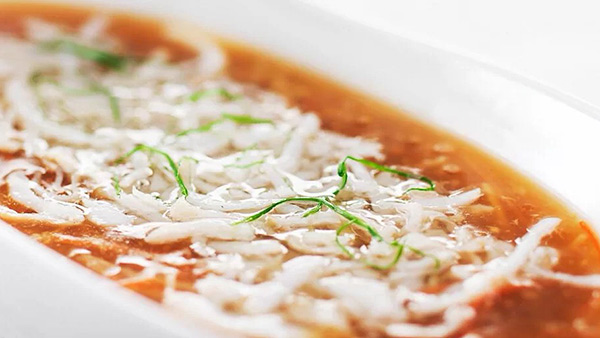
Dongpo Pork
Mrs. Song Fish Soup
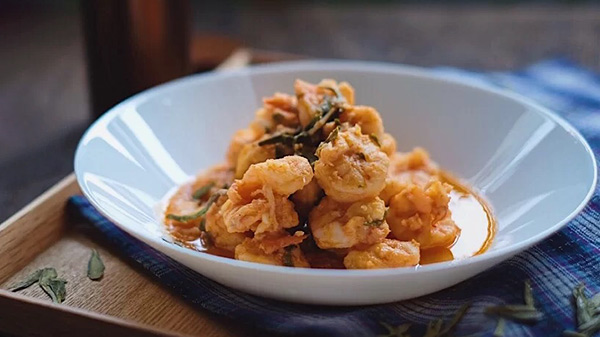
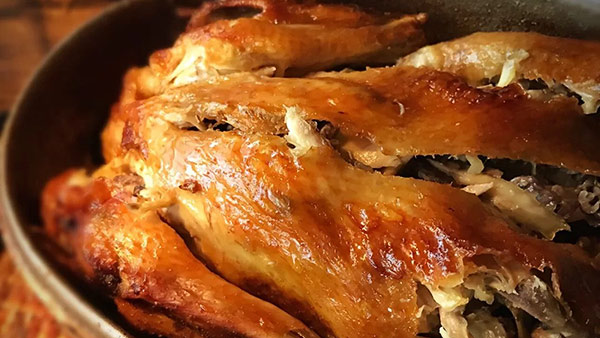
Longjing Shrimp
Beggars ‘Chicken
#7 – Hunan Cuisine or Xiang Cuisine (Xiang refers to the Hunan province.)
Hunan cuisine has a long history. The Chinese cuisine in Hunan formed more than 2,200 years ago, and the cooking skills have been relatively high. It is good at sweet, sour, and spicy, with a strong mountain flavor.
Hunan cuisine is rich in oily and color; the taste focuses on spicy, fragrant, and tender. The cooking method is known for simmering, stewing, steaming, stir-frying, and cured meat. Hunan cuisine has permanently attached importance to the mutual matching of raw materials, and the tastes penetrate each other. People use Sour kimchi as a seasoning, and the dishes cooked with chili peppers are delicious and refreshing. They are trendy and have become a unique local eating custom. Due to its geographical location, Hunan has a mild and humid climate, so people like to eat hot peppers for refreshing and dehumidifying.
The classic dishes of Hunan cuisine include Steamed Fish Head with Diced Hot Red Peppers, Spicy Salted Duck, Mao’s Pork Braised, Steamed Multiple Preserved Hams, Xiangxi Acid Meat, Crispy Chicken with Sesame Seed, Spicy Chicken, and so on.
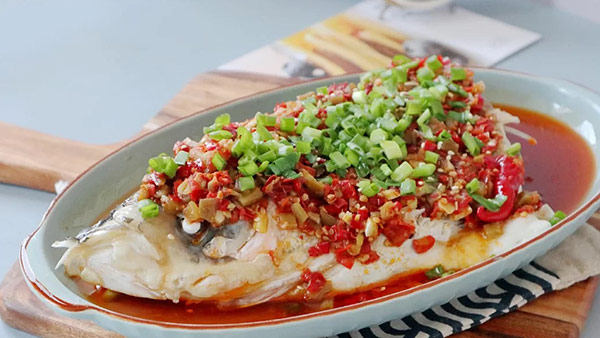
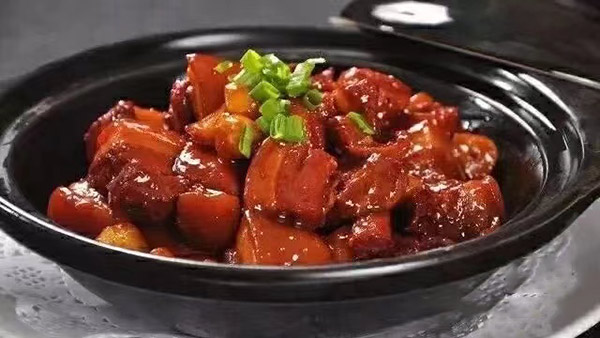
Steamed Fish Head with Diced Hot Red Peppers
Mao’s Pork Braised
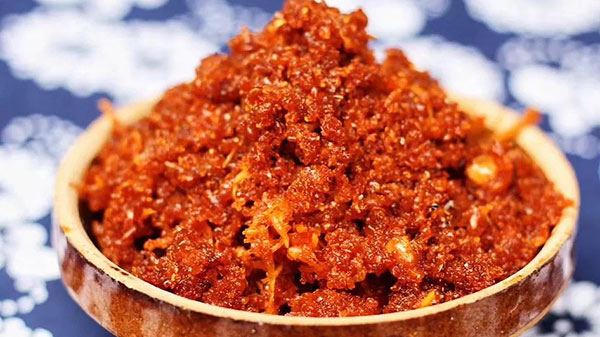
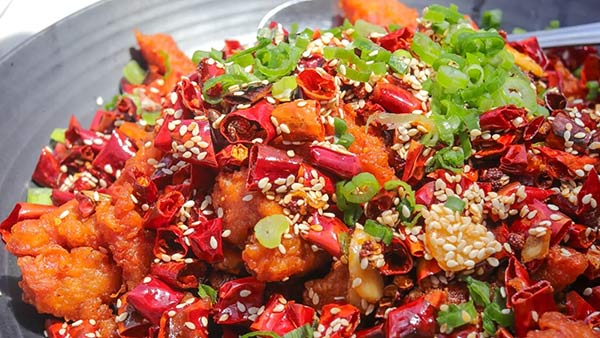
Xiangxi Acid Meat
Spicy Chicken
#8 – Anhui Cuisine or Hui cuisine (Hui refers to the Anhui province.)
The Chinese cuisine in Anhui originated in the Huizhou Prefecture during the Southern Song Dynasty more than 700 years ago. Its unique geographical and cultural environment gives Anhui cuisine its unique taste. Due to the rise of Anhui merchants in the Ming and Qing Dynasties, this local flavor was gradually introduced to all parts of China and once ranked first among the eight major cuisines. The unique conditions have become a powerful material guarantee for the development of Anhui cuisine. At the same time, Huizhou’s various customs, etiquette, and seasonal activities have also effectively promoted the formation and development of Anhui cuisine. Anhui cuisine inherits the exact source of medicine and food and pays attention to food supplements, a significant feature of Anhui cuisine. Anhui cuisine is especially famous for its roast, stew, smoked, and steamed dishes.
The classic dishes of Anhui cuisine include Smelly Mandarin Fish, Hu Shi Yipin Pot, Huangshan Hairy Tofu, Wenzheng Mountain Bamboo Shoot, Feixi Old Chicken, and Nine Fragrant Straw Meat, Wanbei Bean Vermicelli Dumpling, Cured Flavor, and Steamed, etc.
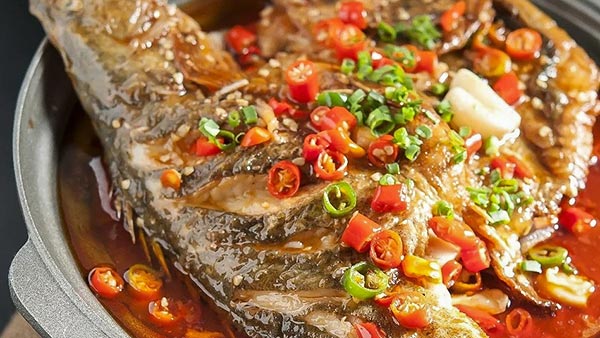
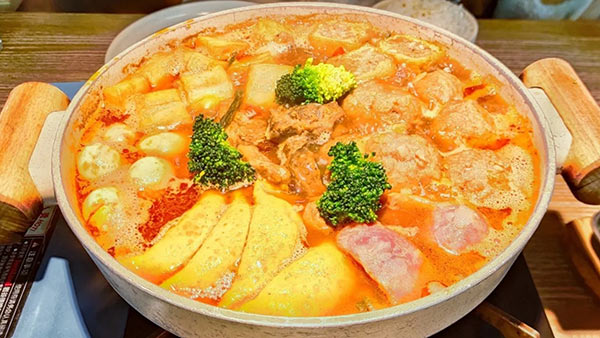
Smelly Mandarin Fish
Hu Shi Yipin Pot
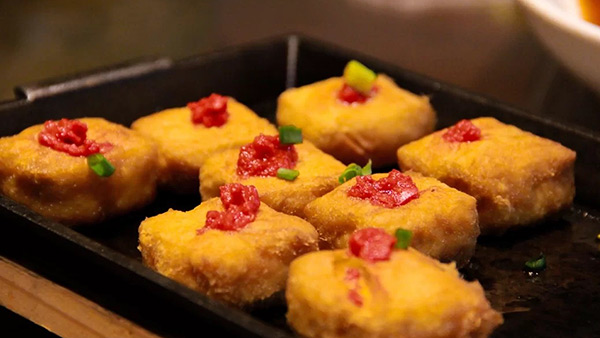
Huangshan Hairy Tofu
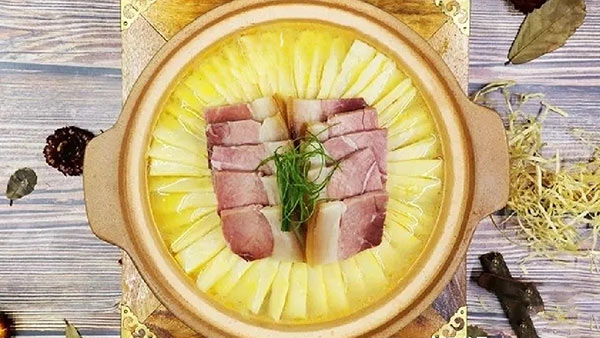
Wenzheng Mountain Bamboo Shoot

